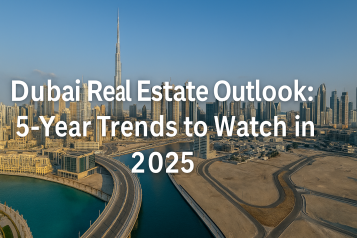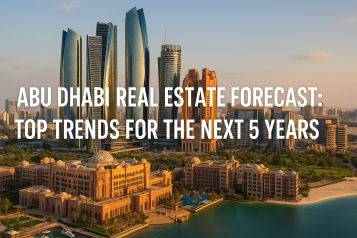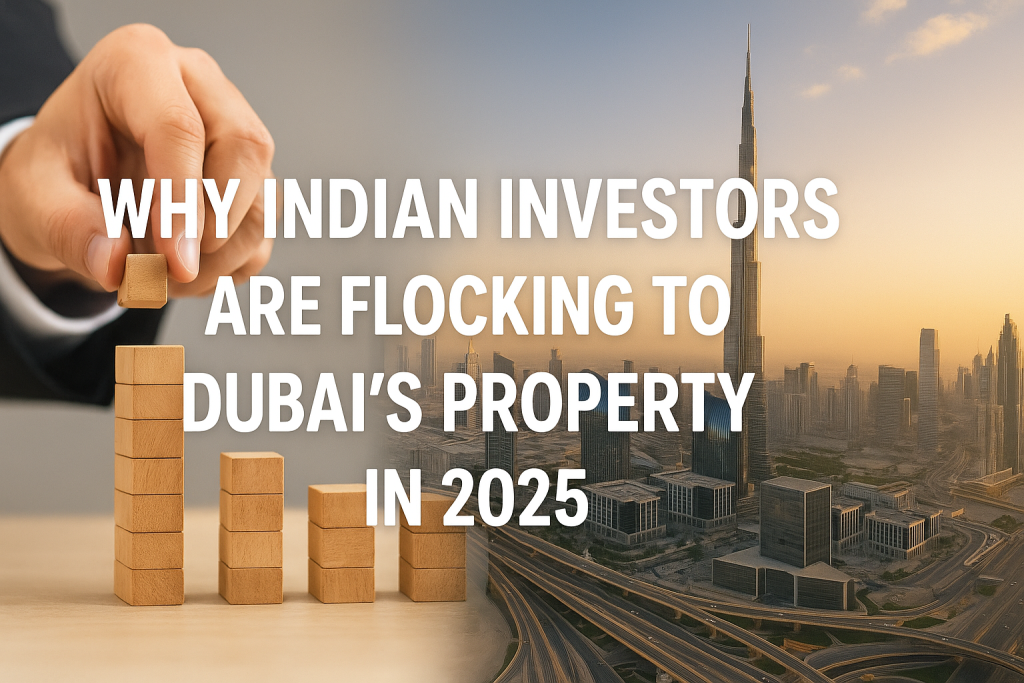

Table of Contents
- Introduction
- Global Demand Dubai Real Estate – Snapshot
- Why Dubai Stands Out in 2025
- High Returns on Investment
- Currency Strength and Tax Benefits
- Market Resilience
- Lifestyle and Quality of Living
- Infrastructure Advantage
- Education and Healthcare
- Safety and Stability
- Policy and Regulation
- Golden Visa Programs
- Foreign Ownership Rules
- Investor Protection Measures
- Mega Projects Shaping Demand
- Technology and Innovation
- Sustainability and ESG Commitments
- Global Investor Profiles
- European Buyers
- Asian Capital
- GCC and Regional Investors
- Institutional Participation
- Case Studies
- Palm Jumeirah Luxury Villas
- Dubai South Affordable Communities
- DIFC and Commercial Towers
- Risks and Challenges
- Common Mistakes Investors Should Avoid
- Fees and Charges for Foreign Buyers
- Outlook for 2030 and Beyond
- Frequently Asked Questions (FAQs)
- Final Thoughts
- Homecubes – Enabling Global Investors in Dubai
Introduction
Dubai has transformed into one of the most dynamic real estate markets in the world, attracting billions in foreign investment every year. With its futuristic skyline, world-class infrastructure, and pro-investor policies, the city has positioned itself as both a lifestyle destination and a safe-haven asset hub.
In 2025, Global Demand Dubai Real Estate is stronger than ever. Capital inflows are rising, international buyers are diversifying their holdings, and long-term investors are choosing Dubai over traditional Western markets. The city’s unique combination of high yields, favorable regulation, and unmatched quality of life explains why global interest is accelerating.
Dubai registered $7bn worth of luxury property deals last year – a new record, according to @knightfrank.
Our Emirate has become a magnet for global investors, and demand for premium real estate remains as high as ever.
I don’t see this situation changing in 2025.… pic.twitter.com/xwKeLGQm5W
— Amira Sajwani | أميرة سجواني (@Amira_H_Sajwani) March 7, 2025
This article explores the reasons behind the surge, backed by fresh data and case studies, while outlining risks, opportunities, and long-term outlooks for international investors.
Global Demand Dubai Real Estate – Snapshot
- UAE foreign direct investment hit AED 167.5 billion (~USD 45.6B) in 2024, up nearly 49% from the year before, with real estate among the top sectors (China Briefing).
- In H1 2025, Dubai attracted USD 3.03B in greenfield FDI projects, representing 86% of the UAE’s national total (Emirates NBD Research).
- Demand is not limited to residential: Dubai’s office market remains strong, with rising occupier demand and limited new supply in prime areas (Cavendish Maxwell).
These statistics confirm what the market is experiencing on the ground: investors from all corners of the globe are choosing Dubai for stability, income, and future growth.
Why Dubai Real Estate Investment Stands Out in 2025

High Returns on Investment
Expected return from Dubai real estate in 2025 is relatively higher than global average. Residential yields average 6–7%, while commercial yields often exceed 8%. Compared to London or New York, where yields sit closer to 3–4%, Dubai offers significantly better income potential.
Currency Strength and Tax Benefits
The UAE dirham is pegged to the US dollar, offering currency stability for international investors. Combined with the absence of personal income tax, this makes Dubai uniquely attractive for global capital preservation.
Market Resilience
Despite global volatility, Dubai real estate has consistently bounced back from shocks—from the 2008 crisis to the pandemic. In 2025, demand is backed by end-users and diversified investors, making the market structurally stronger than before.
Lifestyle and Quality of Living
Infrastructure Advantage
Dubai offers global connectivity via DXB International Airport and the ongoing Al Maktoum International expansion, while public transport expansions ensure seamless movement across the city.
Education and Healthcare
Over 200 international schools and world-class hospitals make Dubai ideal for family relocation. Investors know this strengthens long-term rental demand.
Safety and Stability
Dubai’s low crime rates and political neutrality are critical for HNWIs seeking safe havens for both their families and their capital.
Policy and Regulation
Golden Visa Programs
Property investment of AED 2M qualifies investors for a 10-year Golden Visa, while options as low as AED 750,000 can grant shorter-term visas. These incentives are directly tied to real estate demand and migration inflows.
Foreign Ownership Rules
Dubai permits 100% freehold ownership for foreigners in designated zones, giving global investors direct rights without requiring local sponsorship.
Investor Protection Measures
Strict escrow laws, digitalized title deeds, and government oversight create transparency. This reassures international investors that Dubai is a secure jurisdiction.
Mega Projects Shaping Demand

- Dubai Creek Harbour – a waterfront development set to rival Downtown.
- Mohammed Bin Rashid City (MBR City) – integrating luxury living with green spaces.
- Al Maktoum International Airport – planned as the world’s largest airport, supporting residential and commercial demand in Dubai South.
These mega projects not only expand supply but also create new communities that appeal to international buyers.
Technology and Innovation
Dubai is at the forefront of PropTech adoption. Blockchain registries, digital KYC, and tokenized property ownership are reshaping how global investors engage with the market. The first wave of tokenized certificates issued in 2024 demonstrates appetite for fractional investment and global accessibility.
Sustainability and ESG Commitments
Green-certified developments and net-zero targets are moving from optional to essential. International investors, especially institutions, are prioritizing ESG-aligned real estate, and Dubai is delivering through eco-communities like Dubai Creek Harbour and The Sustainable City.
Global Investor Profiles
European Buyers
Attracted by tax neutrality, safety, and lifestyle—particularly premium villas and branded residences.
Asian Capital
Investors from India and China drive demand in both luxury towers and mid-market apartments.
GCC and Regional Investors
Regional capital focuses on stable yields and long-term legacy investments.
Institutional Participation
Global funds and REITs are actively buying into logistics, offices, and multifamily, recognizing Dubai’s yield advantage and liquidity depth.
Case Studies
Palm Jumeirah Luxury Villas
Villa prices more than doubled between 2020 and 2024, proving the impact of scarcity and global luxury demand.
Dubai South Affordable Communities
Former Expo 2020 grounds have evolved into a thriving affordable housing hub, attracting both families and investors seeking stable rentals.
DIFC and Commercial Towers
Office demand in DIFC remains resilient, with limited Grade A supply ensuring strong yields and long-term appreciation.
Risks and Challenges
- Interest rates – Mortgage affordability could be pressured by global rate hikes.
- Oversupply risk – Certain peripheral communities may face slower absorption.
- Evolving regulation – Tokenization rules are still under refinement, requiring careful platform selection.
Common Mistakes Investors Should Avoid
- Over-leveraging in off-plan projects and not considering pitfalls and wisely investment guide on off-plan projects.
- Ignoring service charges in yield projections
- Failing to check developer credibility
- Buying only for luxury appeal without considering liquidity
Fees and Charges for Foreign Buyers
- DLD Registration Fee: 4% of property value
- Mortgage Registration: 0.25% of loan value
- Service Charges: AED 10–30 per sq. ft. annually
- Brokerage Commission: ~2%
Outlook for 2030 and Beyond
By 2030, Dubai is likely to be the global hub for tokenized real estate. Fractional ownership will become mainstream, providing liquidity and global access to assets.
Residential demand will remain strong across segments: mid-market communities for families, branded residences for expatriates, and luxury waterfronts for HNWIs.
Commercial demand will expand as Dubai strengthens its role in finance, AI, Web3, and logistics, ensuring long-term opportunities for investors.
By 2040, with 5.8 million permanent residents and nearly 8 million daytime population, Dubai will be one of the world’s most integrated, diversified, and sustainable real estate ecosystems.
Frequently Asked Questions (FAQs)
Will Dubai property prices keep rising in 2025?
Yes, but growth will stabilize compared to 2023–2024.
Is fractional ownership legal in Dubai?
Yes, tokenized certificates are regulated under DLD oversight.
Which Dubai areas are best for global investors?
Palm Jumeirah for luxury, Dubai South for affordable growth, DIFC for commercial returns.
What yields can be expected from Dubai real estate investment?
Residential: 6–7%. Commercial: 7–9%.
Does the UAE Golden Visa matter for global demand for Dubai real estate?
Yes—it’s a key driver of migration and property demand.
Final Thoughts
The surge in Global Demand Dubai Real Estate is not a temporary trend—it reflects structural strengths: high ROI, stable regulation, world-class lifestyle, and openness to innovation. Dubai is now competing not with regional cities but with the world’s top financial and lifestyle hubs.
For investors, the decision is clear. Allocating capital to Dubai real estate in 2025 means participating in a market that combines resilience, growth, and accessibility unmatched anywhere else.
Homecubes – Enabling Global Investors in Dubai
At Homecubes, we are building a platform designed to make Dubai’s real estate market accessible to global investors through secure, transparent tokenization models.
We have already applied for our VARA license, and our services will launch once approval is granted. When live, Homecubes will allow investors worldwide to diversify into Dubai real estate with lower entry barriers, higher liquidity, and blockchain-backed transparency.
👉 Contact Homecubes today to learn how you can join Dubai’s property boom.










